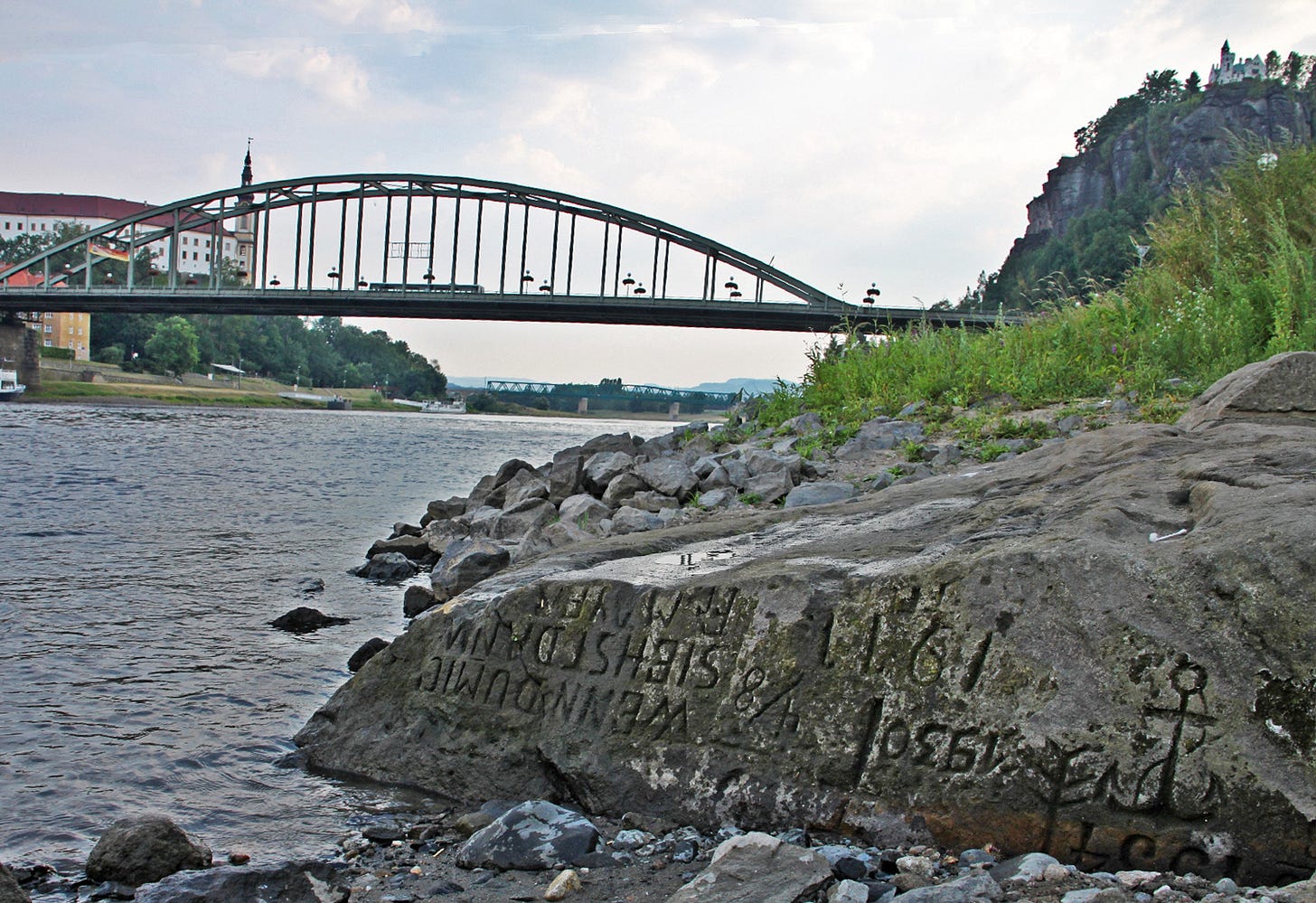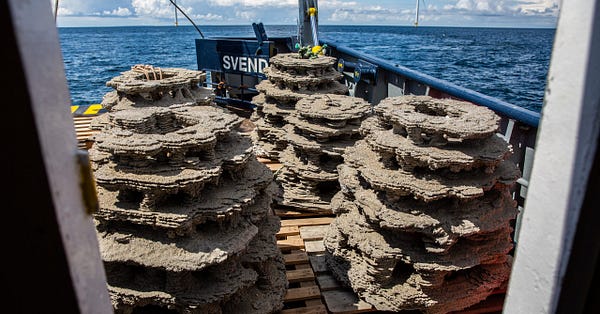This week’s post is going to be a little shorter than the others, because I’m moving house. Not just moving house, but officially, properly moving back to the UK. I’ve been living halfway between the UK and Berlin for the past four months, and it’s finally time to locate some packing tape and wave goodbye to my belongings. The removers will be here in an hour, some plates will be smashed, and then we’ll be on our way.
It was easy to decide what to write about this week. It’s World Water Week, held annually in Stockholm. When I worked in comms for the International Water Management Institute, the key topic was always - how does water get a seat at the table? How do we get the media to even notice the planet’s mangroves, wetlands and swamps? How we can show that nature-based solutions can be a critical solution to some of the world’s most pressing climate issues?
Debates around water, drought and flooding, always seem to be ignored, with a focus on famines, freak storms, or excess emissions instead. Although these are of huge importance, it’s long been challenging to engage people in discussions around water.
During brainstorms at IWMI we thought perhaps it was because water has less dramatic connotations. It’s not burning fire or desperate hunger (even though lack of water leads to both of these things). Global media organisations also tend to be based in cities that experience high levels of rainfall, so the New York Times, Washington Post, BBC or the Guardian, are unlikely to ever lament that there’s not enough rain.
However, that narrative is changing. This summer, Twitter was packed with virtual raindancers, posting tweets about longed for rains across the UK. Our parks went crisp yellow and trees began shedding brown leaves. Our lack of water became evident. Just this morning, I saw a tweet about another city suffering from severe water shortage:

So in this week’s post I wanted to share some of the top water-related news stories of the week. Share with your colleagues, flag with other members of the comms teams, and try to keep water in your thoughts when you’re trying to align a project or campaign with a significant global event.
Pakistan Floods
Floods caused by insane monsoon rains have killed more than 1,000 people and caused damage of more than $10bn. An Islamabad-based climate scientist told the Guardian that they are witnessing the ‘worst floods of the century’, caused in part by incredibly heavy monsoon rains. Pakistan has never experienced eight weeks of non-stop torrential rain before. This, combined with mudslides and vulnerable infrastructure, has lead to devastating flooding.

Ice in Greenland
If ice falls off an iceberg does it really impact the planet? Yes, for sure. A study released last week and published in journal Nature, found that recent melting ice from Greenland icebergs will result in a foot of sea level change, no matter how many cans we recycle. Scientists found that the damage is now irreversible as a result of the melting ice, and we will start to see the results of the 10 inch sea level rise over the next century. An earlier, different study, published in April 2022 by the NOAA, found similar results – that we’re on track for a 10 inch sea level rise by 2100 whether we like it or not.
One foot of sea level rise could mean the following countries and cities will have to start some serious investing in coastal defences:
Jakarta, Indonesia, which is sinking between 5-10cm each year due to groundwater drainage issues
Lower Manhattan
Between 18-32% of China’s coastline is at risk of coastal flooding, especially with a 1 foot sea level increase
Almost the entirety of Bangladesh, which already experiences significant storm surges and floods.
Kenya drought
From wet to dry, Kenya is experiencing its worst drought in 40 years. As a result, more than 4 million people are food insecure, while 3.3 million are struggling to find water to drink, the UN and aid agencies report.
In Kenya’s Ilret District 85% of livestock has died, leaving millions with no livelihood and vulnerable to further climate disasters. The drought has also ripped through the Sahel and Horn of Africa, areas where famine has been on present for decades. The UN chief reported that children here are ‘one disease away from catastrophe’.
European drought
Readers who dwell in Europe won’t be surprised to hear that Europe is still in the grips of the worst drought in 500 years. Rivers have dried up, including the Po that runs through Florence, while Hungersteine, or stones that revealed messages of famine (If you see these then weep), could be seen along the Elbe, in Czech Republic after the river reached its lowest levels in 500 years.

Bluntly, it’s been bad news for Europe. The drought has impacted shipping, livestock and crops, during a summer where food shortages are already being felt because of the war in Ukraine.
Next steps
It’s a new day and a new week, ergo, a whole new raft of climate horrors to come. And on that cheery note, what can we do? Well, we can work hard to prevent another foot of sea level change from happening. We can learn about the importance of Mangroves, and the key role they play in preventing erosion. We can learn about wetlands, and how in Sri Lanka’s capital, Colombo, they trap storm water and reduce flooding. We can talk about the importance of great water management, and education.
And, one piece of positive news in the world of water from this week: A Danish company are seeing how 3D printed reefs can help biodiversity to return to the seas







